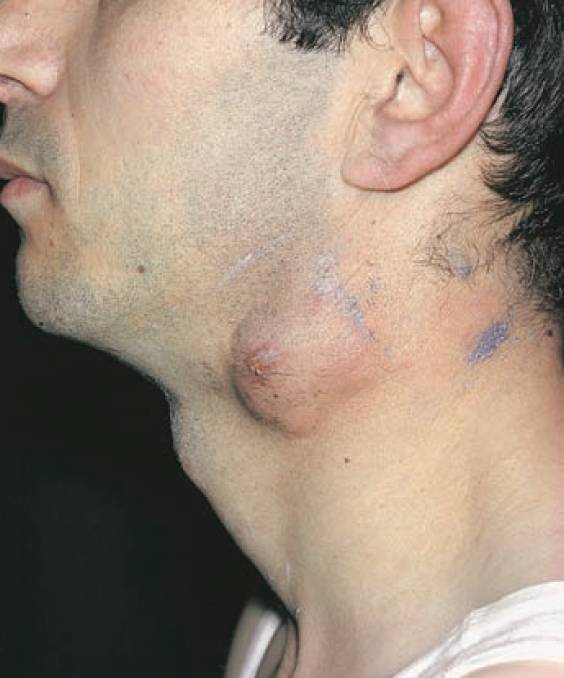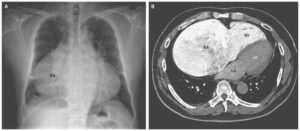This post is an answer to the Case – A Young Immigrant with a Lump in the Neck
This patient presents the clinical features of a tuberculous ‘cold’ abscess.
What is the origin and the natural history of tuberculosis of the cervical lymph nodes?
This condition is now rare in children and young adults born in the Western world, where milk comes from tuberculosis-free herds of cows or, at the least, is pasteurized. Tuberculous mycobacteria in infected milk are taken up by the lymphoid tissue in the palatine tonsils, passes to the tonsillar lymph node and may spread to the other nodes in the deep cervical chain. The nodes enlarge, and then break down to form a tuberculous abscess.
Left untreated, the pus from the infected nodes breaks through the deep fascia to lie in the subcutaneous tissue – a ‘collar stud abscess’. This is what has happened in this young man. There is an abscess in the superficial tissues of his neck that leads down through a track through the deep fascia down into the breaking down mass of deep cervical lymph nodes. If treatment is still further delayed, the abscess discharges spontaneously through the overlying skin, resulting in a chronic tuberculous sinus.
What is your differential diagnosis in this patient?
- Acute lymphadenitis, but this is very painful and tender and the infl amed skin feels hot to the touch (unlike this ‘cold’ abscess).
- An infected branchial cyst (see this case)
An X-ray of the neck may be helpful as chronically infected tuberculous nodes usually show flecks of calcification.
What is the name given to tuberculous pus?
‘Caseous’ pus – the word caseous means ‘cheesy’, because of its resemblance to cream cheese.
Treatment of tuberculous cervical lymph nodes
Enlarged nodes should be excised. If the patient presents with a ‘collar stud abscess’, as in our catering worker, the pus is evacuated, a search made for the hole penetrating through the deep fascia, and the underlying caseating node evacuated by curettage. The operative treatment is combined with antituberculous chemotherapy.


